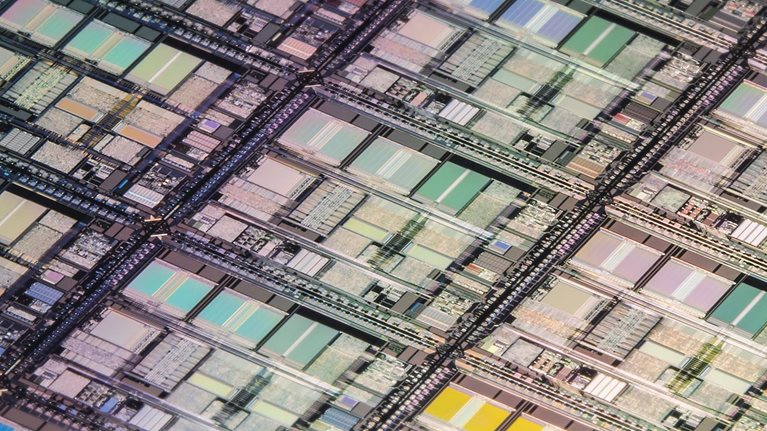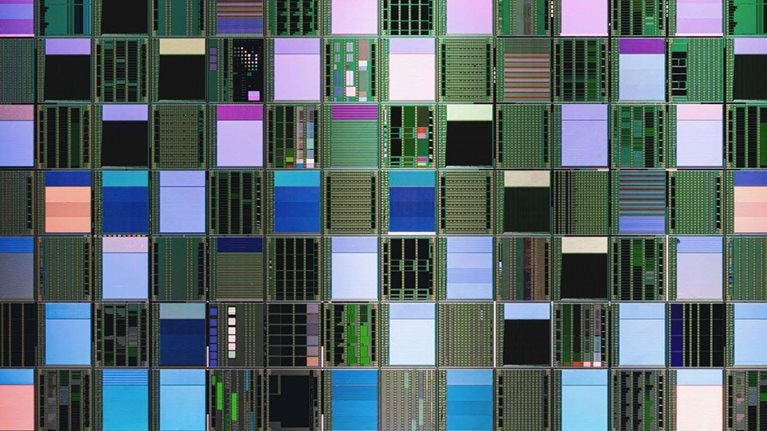David Goeckeler took on the role of CEO at Western Digital on a Monday in March 2020. That Wednesday, the World Health Organization declared the COVID-19 crisis a pandemic.
“I have a very clear recollection of bringing my new leadership team together that day,” recalls Goeckeler, who previously headed up Cisco’s networking and security business. “The first decision we made was to send everyone that we could home.”
It was the right decision to make—and well-executed. Keeping employees safe was the number one priority for the nascent CEO. Number two was keeping the business running amid exploding demand for the company’s storage and hard disks, although it was unclear when workers might return safely to factories. “Trying to balance those two things in the first couple of months was an interesting experience,” Goeckeler says.
While challenges remain, new opportunities have emerged as the digital era spurs unprecedented increases in data storage. McKinsey’s Eric Kutcher and Abhijit Mahindroo recently interviewed Goeckeler about leading through these tumultuous times, the democratization of technology innovation, the myriad challenges in the technology manufacturing ecosystem, and the upsides of uncertainty and change. An edited transcript of their conversation follows.
Eric Kutcher: We’re more than two years into the pandemic. In some ways, the world has moved on. In others, it hasn’t. What are you most proud of having managed? And what, in hindsight, would you have done differently?
David Goeckeler: Any time you come into a company, it’s a lot of fun because you get to learn a new business. But, more important, you get to learn a new team. That team aspect was a challenge because we couldn’t spend any time together. To this day, I haven’t been to any of our facilities around the world. We built these relationships in a virtual environment.
Yet one thing we did really well was balancing the priorities of keeping the business moving and keeping our team safe. The amount of innovation needed to do that was incredible—to make sure we could get people into the factories, into the facilities, into the fab [fabrication plant], and keep things going. I’m really proud of the way the team responded to this situation while caring for the employees.
We have started to restructure the company in a way that I think will allow us to execute better. We’re delivering better for our customers. Our innovation road map is rekindled and moving forward.
But there are some things we might have done better. For instance, if we had known the pandemic would persist for two years, could we have anticipated all the supply chain and logistical issues? Maybe we would have reacted to some of those in a slightly different way. But all in all, we’ve made the best of a difficult situation. Quite frankly, the company is anticipating great opportunities.
Abhijit Mahindroo: It’s an exciting time to be in the memory business. How do you see the prospects and the challenges ahead?
David Goeckeler: I think it is a very exciting time to be in any business associated with data. At Cisco, I got to see what was going on around the globe. I saw from my vantage point that the world had created a new technology platform: the cloud, powering intelligent devices connected by high-speed networks. That technology architecture came into existence because each of those pieces has evolved independently.
I remember when the iPhone came out on 3G. Now look where we are: 5G and going beyond. You have ever more intelligent devices. Now, we’re all talking about the metaverse and VR [virtual-reality] headsets. You have the cloud, where the largest, most powerful, and most innovative technology companies are driving unprecedented innovation.
I started out as a software developer. In the past, if you wanted to build software, you had to hire a whole bunch of people like me. It was complicated and messy. Now, you have the cloud, and every couple of months you have new capabilities available—the most advanced capabilities in the world—because somebody else is pouring innovation into that.
It’s the democratization of technology innovation—it’s available to everybody, every company, and every industry. There are a lot of people innovating on top of that platform. Every time that happens, it drives more demand for storage, both at the end point and in the cloud.
Abhijit Mahindroo: What do you see Western Digital as, a horizontal company or a vertical company?
David Goeckeler: We can play in both areas, but I think it’s most powerful if you play in the horizontal first. This is what’s so exciting: there are a whole bunch of people out there innovating and figuring out ways to use this platform that will drive more data and more storage. We benefit from that. Then, if there are ways that we can accelerate that architecture and specific verticals by building specific products or specific adaptations of our technology, we’ll absolutely do that if it makes sense. Then, whatever you do on top of that is going to drive demand for that horizontal platform.
It’s the democratization of technology innovation—it’s available to everybody, every company, and every industry. There are a lot of people innovating on top of [the cloud].
Abhijit Mahindroo: Through your acquisition of SanDisk, Western Digital has continued a long-term joint venture with Toshiba [now Kioxia]. How do you make such large, complex partnerships work?
David Goeckeler: First, the transaction has to be part of a larger strategy; it can’t be the strategy itself. It is really important to have a lot of clarity about that going into it. In this case, it gives us scale in R&D and manufacturing in an industry where scale is very, very important. It gives us a strong cost position and R&D road map. It gives us a position as the largest merchant NAND [flash memory technology] supplier in the world, which is a really good spot to be.
To make a partnership of that scale that successful for that long, it has to work for both parties. When you’re inside the company, you can see why it works because the teams are very close. The engineering teams work hand in glove, day to day. It’s been a little harder during the pandemic, but people have made it work because the relationships are deep and strong. And the value in the outcome is really important for both of us.
You have to make sure you spend a lot of time on cultural fit. The teams coming together have to see it as their shared future. It can’t be us versus them. It can’t be winners versus losers. It can’t be, “We’re taking over.” It has to be, “We’re coming together.” The dynamic of the team and getting that right is where the magic is.
Eric Kutcher: Something everyone is dealing with today is the “Great Resignation.” How do you think about that?
David Goeckeler: I’ve made a career of going into new organizations, and this question always comes up: How are you going to attract talent and retain all the great people that are here? The answer is to create an environment they want to be a part of. I have a core belief that people want to be part of something bigger than themselves.
Now, we have the pandemic, which poses a challenge. We’ve got to keep the business going, but the business isn’t going to work unless the people are taken care of. So with everyone working remotely, how do we create the sense that our employees are a part of something? If you can create that, you will get tremendous loyalty.
You have to make sure you spend a lot of time on cultural fit. The teams coming together have to see it as their shared future. It can’t be us versus them. It can’t be winners versus losers.
Eric Kutcher: What has it been like managing through two other forces that are squarely top of mind today: global supply shortages and the inflation that accompanies that?
David Goeckeler: I think of the supply chain issues along three dimensions. First, we’re a manufacturer. At the beginning of the pandemic, it was hard to get enough people in to keep the factory running, especially when you had this demand boom. We’ve worked through that, but it’s something we still keep very close tabs on.
Second, we have to get enough components from our own suppliers so that we can build what we need to build. That has become increasingly difficult. Lead times are out to over a year for some of our components. That’s a constant—day to day, week to week, we are making sure we can get as much as possible to deliver to our customers. We are clearly in a situation where we can’t meet true demand.
Third, we have customers in the same situation—where they can’t get all the pieces that they need to assemble everything they want to meet true demand. We’re starting to figure out lead times and how to manage within that, how to manage demand a little bit better, how to keep everything running. However, it continues to be a very difficult situation, and it looks like we’re going to be in it for quite a while.
On top of this, the logistics of getting what we need around the world has been a major issue. A lot of freight goes on commercial air traffic. When there’s no commercial air traffic, it has to go another way.
All of this leads to inflation. That means staying on top of what’s happening on a very dynamic basis, being very agile, and working with your customers.
At some point, the world will readjust. With a high fixed-cost business and high levels of investment, it won’t change overnight. But it will change. The world will adapt, and we’ll get back to whatever the new normal is.
Eric Kutcher: Do you have an idea if we will return to the old demand for storage or if this is a permanent step up?
David Goeckeler: The most powerful technology companies the world has ever known are making a technology platform available to every company, every government, every institution in the world to absorb and build a better business, deliver better service, and make people’s lives better. That process is going to continue to accelerate and accelerate. So I think it’s a step up, and then the slope will tilt up.
Eric Kutcher: What advice would you give a young technology professional?
David Goeckeler: A lot of people will tell you, find something you love to do. But I would add something: make sure you’re good at it. Find something you have talent in, because then it’s not so hard.
If you’ve chosen to be in the technology world, it’s driven by change. You may hear people say, “change is hard” or “embrace change.” I think you have to move beyond that. At some point in my career, I realized that change is opportunity. If nothing ever changes, then nothing will change for the better. If you can be the person who is the most comfortable with the most uncertainty, that’s a premium skill set. Sometimes I say the person who can live with the most uncertainty the longest, wins. If you can think about being the one who can take something uncertain and drive it to more certainty, that is a tremendously helpful mindset. Then you evolve from avoiding change to looking for change.

